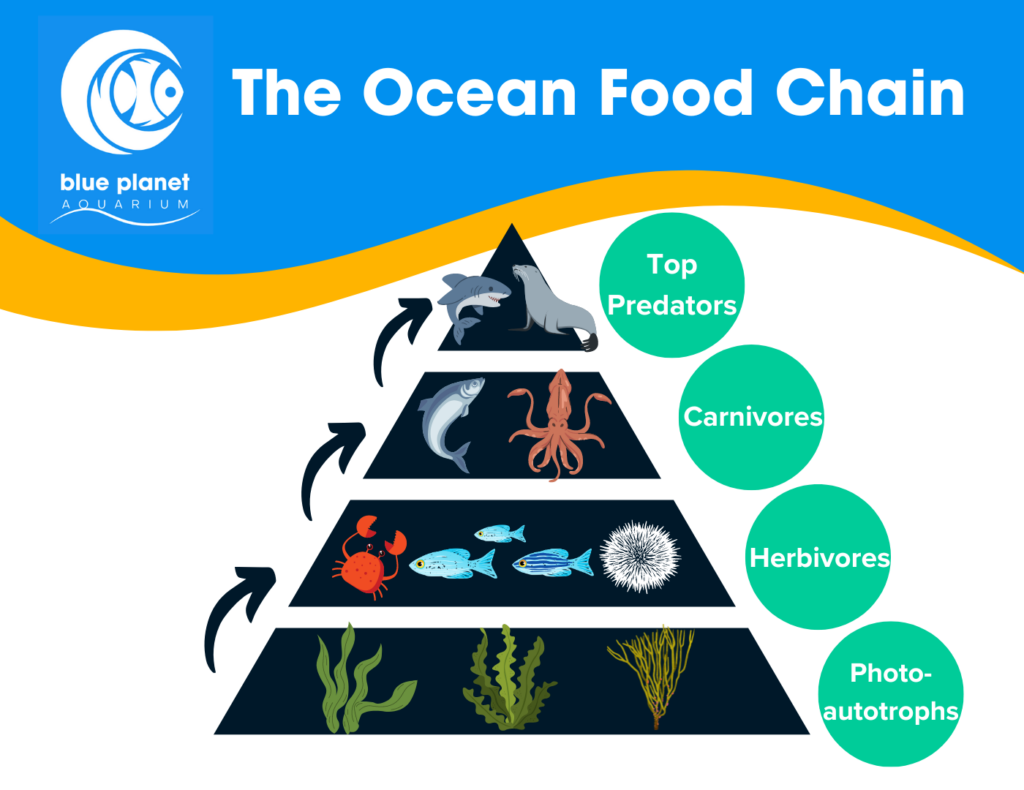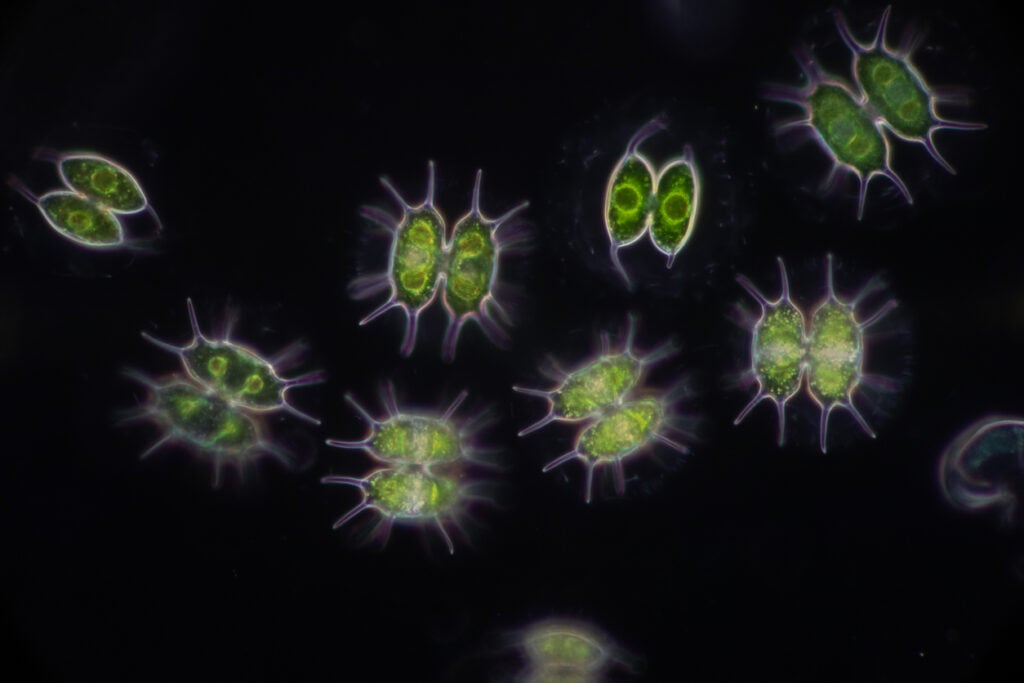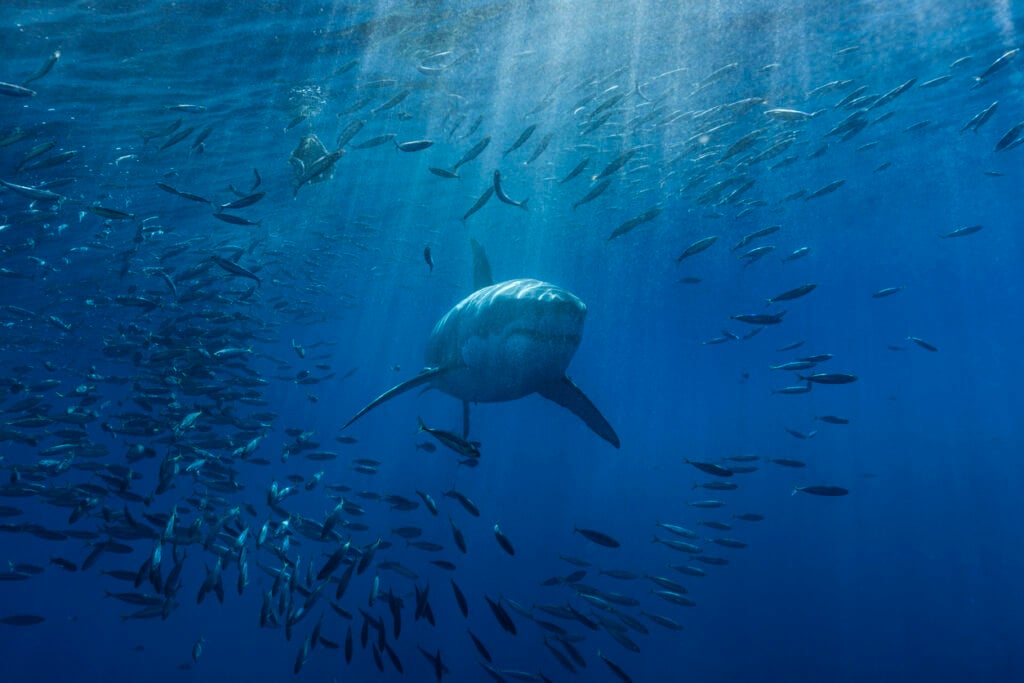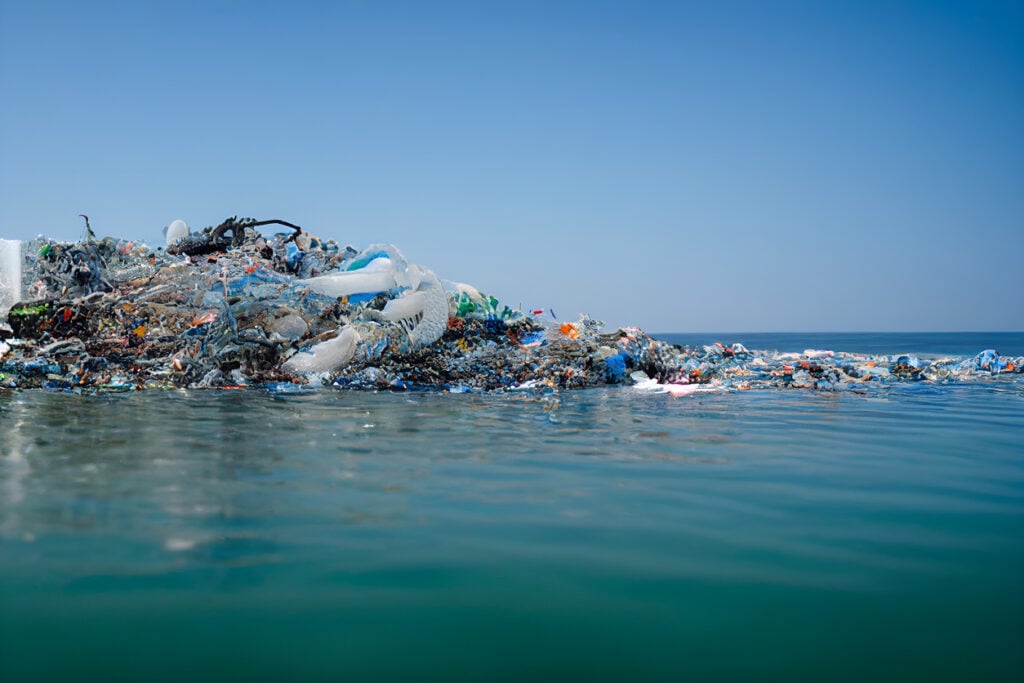The ocean covers over 70% of our planet, and there are millions and millions of creatures, both big and small, living within it. The hierarchy is a super important part of ocean life, but do you know how each level of the ocean food chain feeds into the next?
If you’re interested in learning more about sea creatures and how their world works in the depths of our seas, you’ve definitely come to the right place.
Here, we’ll be swimming through the different levels of the ocean food chain, looking at how it works, and what would happen if the chain was disrupted.
The Ocean Food Chain

As you can see in the image above, the typical ocean food chain has four levels. At the top, we have the top predators which are usually larger sea mammals such as sharks, seals, and dolphins. They have no known predators except for humans, which means that they can basically eat whatever they want from any level of the chain, including themselves.
Second down in the hierarchy is the carnivores. These are the main prey of the top predators because they’re much bigger than the creatures in any of the lower levels of the chain, meaning they can provide more nourishment. Some examples of sea creatures at this level of the ocean’s food chain include squid and sardines.
Moving further down the chain, we have herbivores and smaller ocean creatures. Sea creatures at this level of the food chain include crabs, sea urchins, and parrotfish. These are usually eaten in large quantities by the carnivores of the ocean. Finally, we reach the bottom of the food chain where the photoautotrophs sit. These mostly provide food for herbivores, although carnivores will sometimes add these to their diets.
Who is at the Bottom of the Ocean Food Chain?
As we’ve already mentioned, photoautotrophs sit at the bottom of the ocean’s food chain. And it’s easy to see why – or at least it is with a strong enough microscope.
Read on to learn more about these super tiny but massively important creatures.

Where do they live?
One-celled organisms called phytoplankton account for the vast majority of bottom-dwelling creatures in the ocean food chain. These tend to live in sunlit upper-ocean waters because they use photosynthesis to convert nutrients and carbon dioxide into organic compounds for the other creatures in the food chain to eat. Living in an area of the water closest to the Sun means this process is usually pretty easy for them. This is also partly why we call them photoautotrophs.
What role do they play in the food chain?
These tiny but mighty plants play a large role in the ecosystem of the ocean. They are the primary producers of the organic carbon that each and every animal within the ocean food web needs to survive. So, if the numbers of phytoplankton and other organisms at the bottom of the food chain were to fall too low, this could have a huge knock-on effect across the entire food chain.
They’re also responsible for the production of more than half of the oxygen we breathe on the entire planet. That’s a lot of responsibility for such small creatures to take on!
Who is Top of the Ocean Food Chain?

The large predators sitting at the very top of the ocean’s food chain are sometimes also called opportunistic feeders. This is because they can and will eat anywhere within the food chain, including eating other large predators.
Aquatic animals at the top of the food chain include finned animals (sharks, tuna, dolphins), feathered animals (pelicans and penguins), and flippered animals (seals and walruses).
Where do they live?
Because they’re at the top of the food chain, the top predators basically have free roam of the ocean. But to catch the best prey, they usually set up camp in the areas richest in life.
Research from top marine scientists has shown that these apex predators often move to warmer sea temperatures since this is where ocean life is most productive. When the amount of food available to them becomes low, they tend to move on to a new area.
What role do they play in the food chain?
These animals are the apex predators of the ocean because they tend to be large, fast, and extremely skilled at catching their prey. So, while they cut down the numbers of other creatures within the food chain, the way they do this is usually still sustainable.
However, if there’s a sudden shift in the number of prey available to the top predators, this can have a knock-on effect on the entire chain. For example, if squid or sardine numbers suddenly dropped, the top predators would start searching for other substantially sized creatures to eat. As a result, the food chain could be disrupted since normal behaviours would change.
How Does Plastic in the Ocean Affect the Food Chain?
Unfortunately, we don’t just need to worry about overfishing and conserving the ocean’s wildlife. The threat of plastic pollution and the effect this can have on the food chain has become a growing concern over the last few decades.

Around eight million metric tons of plastic are thought to be ending up in our oceans every single year, and this number is only getting bigger. Because plastic takes so long to decompose, it stays in the ocean and damages the ecosystems.
Microplastics in particular can easily make their way into the sea, where smaller fish end up eating them. Once a fish eats the plastic, it stays inside them. This means that when larger animals eat smaller creatures, the plastic travels up the food chain to the top. Since the top predators tend to eat the most food, they are also eating the most plastic out of any other level of the food chain.
How can we help tackle plastic pollution?
Keen to do your bit to reduce plastic pollution and reduce the threat to the ocean’s ecosystem?
Take a look at our top tips below:
- Cut down on single-use plastic like plastic bottles and plastic straws
- Choose reusable everyday products, such as reusable bottles and steel straws
- Buy recyclable products from environmentally responsible retailers whenever possible
- Go litter picking on beaches and in coastal areas
As interested in ocean life as we are at Blue Planet Aquarium? To find out more information about us or to book tickets, visit our homepage.
